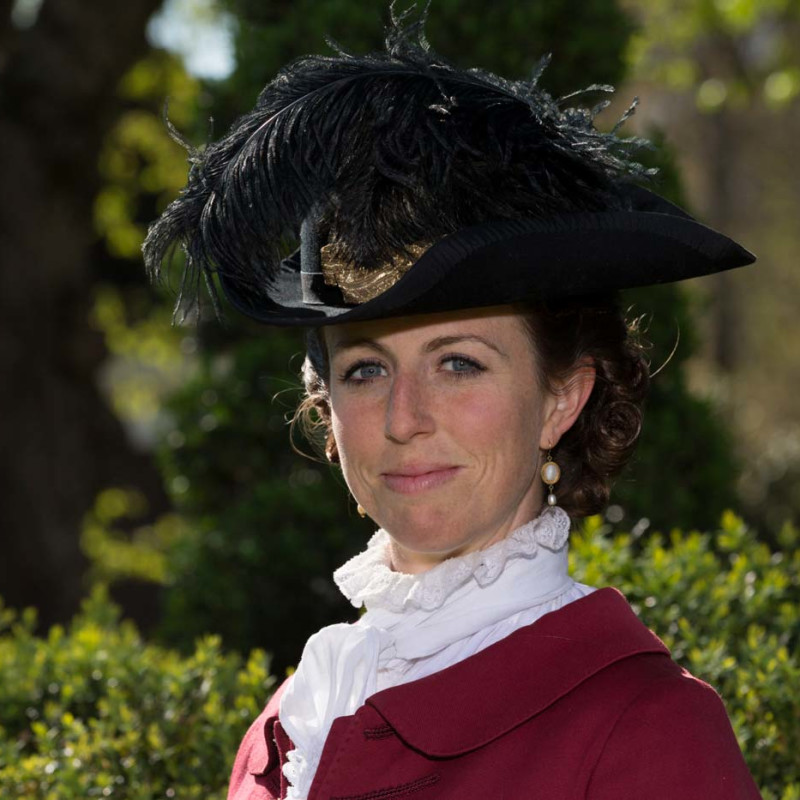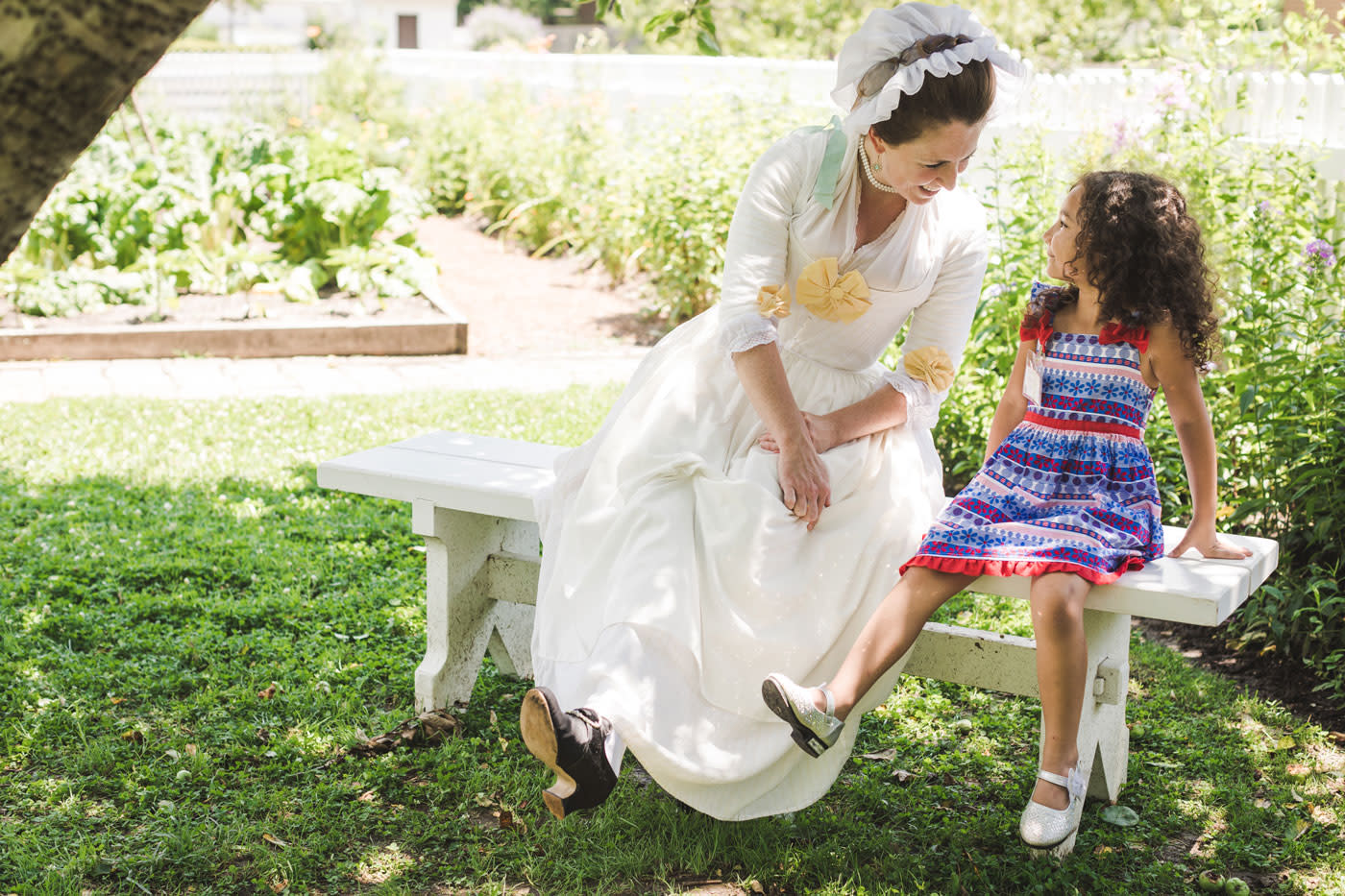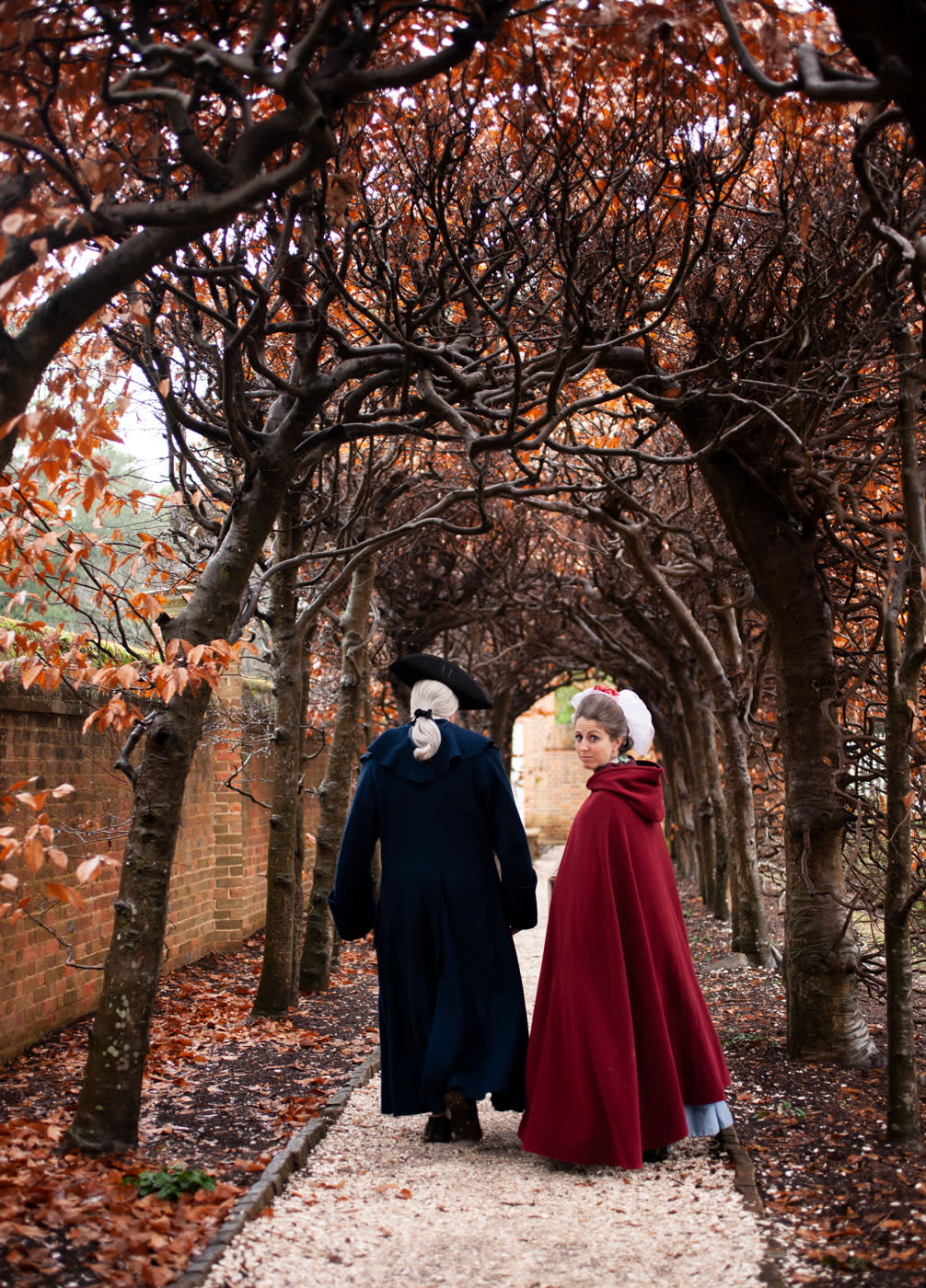
Martha Washington
Martha Washington was an affable, determined and practical woman. During her youth, she took on the management of a vast estate by herself. As a young woman, she traveled to be with her husband, General Washington during the Revolutionary War.
Scroll to Read
BORN CONNECTED
Martha Dandridge (1731-1802) was born at Chestnut Grove, a 500-acre plantation in New Kent County, Virginia, 25 miles west of Williamsburg. She was the eldest of eight children born to John and Frances Dandridge. Through her mother’s family, the Joneses, Martha had plenty of connections to Williamsburg. Her great grandfather was the first rector of Bruton Parish Church and her grandfather served as a Burgess and owned property in Williamsburg during his lifetime.
“The greater part of our happiness or misery depends upon our dispositions, and not upon our circumstances.”
Martha Washington
MARRIED ONCE
At the age of 18, Martha married Daniel Parke Custis (20 years her senior) on May 15, 1750 in New Kent County. Although the young couple made their home at the Custis estate in New Kent, they had many Williamsburg connections through the powerful Custis family and plenty of opportunities to travel to the capitol city for balls and social events. Daniel and Martha had four children together during their seven-year marriage, though only her youngest two — John Parke Custis (called Jacky) and Martha Parke Custis (called Patsy) — survived into adulthood. Tragically, Daniel died suddenly during the summer of 1757, leaving Martha a widow with two small children and in charge of the entire Custis estate. During her widowhood, despite her loss, she efficiently managed the large estate.

MARRIED TWICE
After being widowed for a year and a half, Martha remarried on January 6, 1759 to Col. George Washington. They married at her home in New Kent and spent the first three months of their marriage at Custis Square in Williamsburg. To the marriage, Martha brought her two small children, access to a third of the Custis estate, and an elevated social standing.
While she and George never had any children together, he became the guardian of her children and the two raised many of their nieces, nephews, and Martha’s grandchildren at Mount Vernon. The partnership between the Washingtons was tested and strengthened at the outbreak of the American Revolution as Mrs. Washington joined her husband on the public stage of duty. During the war, she traveled to every winter encampment to be with her husband, was inoculated from smallpox, and Americans dubbed her with the honorary title of Lady Washington.

THE FIRST FIRST LADY
After the war, the Washingtons looked forward to retirement from public life. But Washington was called upon to become the first president of the new nation and Martha was at his side. The Washingtons moved with two of her grandchildren to the nation’s first capital city, New York, in 1789. Throughout the two terms of the presidency that the Washingtons served, Mrs. Washington defined the role and expectations of the president’s lady. Many of the same duties outlined by Mrs. Washington during those years are still followed by President’s wives today.
The Washingtons finally retired from public duty at the end of two terms of the presidency. They did not enjoy retirement together for long; George passed away after a short illness in December 1799 leaving Martha a widow once again. During her second widowhood, Mrs. Washington handled the specifics of her husband’s will and decided to enact a portion of the will early: in 1801, Martha freed the African Americans held in bondage by George Washington — around 126 people. Mrs. Washington passed away in May, 1802 at the age of 70. She is buried on the Washington estate, next to her husband of over 40 years.
Throughout the course of her life, Martha defined and redefined her roles as daughter, wife and mother, leaving behind a legacy of her accomplishments that are celebrated today.
Further Reading
Meet a Nation Builder
-
Conversation: Meet a Person of the Past
Meet people of the past at Charlton's Coffeehouse for some informal conversation or activity.
CW Admission
-
Performance: Visit with Marquis de Lafayette
Step into the past with the Marquis de Lafayette, French hero of two worlds. Through stories and questions, explore the hopes, choices, and challenges he faced.
CW Admission
-
Performance: Visit with Reverend Gowan Pamphlet
Step into the past with Gowan Pamphlet, revolutionary Black Baptist preacher. Through stories and questions, explore the hopes, choices, and challenges he faced.
CW Admission